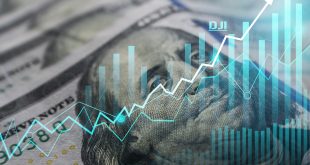US businesses and firms have eventually managed to cope with shortages and Omicron. The ISM services index falls to three-month low of 62% from record 69.1%.
Most US companies that service customers are still doing brisk business, but omicron threatens to dampen sales.
The ISM figures have revealed that CVS, Citibank, Wal-Mart as well as other service providers and companies that dominate the economy grew slower in December, just as omicron began to add fresh stress on a US economic recovery still suffering from wide-ranging labour and supply shortages.
The Institute for Supply Management’s services index dropped to 62% last month from a record 69.1% in November. Readings above 50% signal expansion and numbers above 60% are considered exceptional.
It is still reflective of a very strong rate of growth. It is a matter of leveling off from very high levels in the past few months. Economists polled by The Wall Street Journal forecast the index to fall to 66.8%.
The lower ISM reading in December doesn’t capture much of the impact of Omicron. The new strain didn’t explode until toward the end of the month.
The bigger picture shows strong growth in the economy, parts of the service industry will likely experience points of weakness as Omicron works its way through the US population, particularly restaurants and entertainment facilities including cinemas.
This variant is not as strong or as severe as seen in the past, but it’s still impacting the ability to staff. The biggest problems for most companies in the longer run are ongoing shortages of labor and supplies. Businesses cannot find all the workers and materials they need and the cost of everything is going up.
The pace of consumer inflation soared to 6.8% in November and hit the highest rate in almost 40 years. The material shortages appear to be starting to ease, Nieves suggested, but economists say it could take up to a year or more before supply chains return to normal. Companies are still having trouble obtaining supplies and getting materials delivered quickly.
They are also paying a lot more for what they need. The prices index rose slightly to 82.5%; the third highest reading ever.
Supply chain challenges to procure supplies for our restaurants remains our greatest obstacle at present, along with staffing needs. Another price hike is also anticipated in 2022. Most executives also reiterated it was hard to find good help while labor shortages are still causing issues.

 Noor Trends News, Technical Analysis, Educational Tools and Recommendations
Noor Trends News, Technical Analysis, Educational Tools and Recommendations




